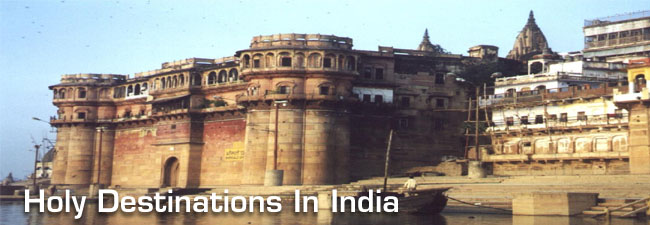 Madurai
Madurai
Madurai is one of the oldest cities of southern India. It has
been a centre of learning and pilgrimage, for centuries. Legend
has it, that the divine nectar falling from Lord Shiva's locks,
gave the city its name - Madhurapuri, now known as Madurai.
History
Madurai's history dates back to over 2000 years ago, when it
was the capital of the Pandyan kings. In the 10th century AD,
the Chola emperors captured Madurai. It remained in their hands,
until the Pandyans regained their independence in the 12th century,
only to lose it to the Muslim invaders under Malik Kafur, a
general in the service of the Delhi Sultanate. The Hindu Vijaynagar
kings of Hampi overthrew Malik Kafur?s dynasty. After the fall
of Vijayanagar, in 1565, the Nayaks ruled Madurai until 1781
AD.
During the rule of the Nayaks, the bulk of the Meenakshi temple
was built, the main attraction for visitors, today. Madurai
also became the cultural centre of the Tamil people. Madurai
passed on to the East India Company in 1781, and in 1840, the
Company razed the fort, which had previously surrounded the
city, and filled in the moat. Four streets, the Veli streets,
which were constructed on top of the fill, till today, define
the limits of the old city.
Location and Access
Location: Madurai, Tamil Nadu
Deity Worshipped: Lord Somasundara (Lord Shiva) And Goddess
Meenakshi
Built By: The Pandyan King, Kulasekhara
How to Get There
Air - There are daily flights to and from
Tiruchirapalli, Chennai and Bangalore.
Rail - There are train connections to Madurai
from Chennai, which takes eight hours via Trichy and from Rameshwaram,
takes six hours. If you approach Madurai from Kerala, some spectacular
scenes of the Western Ghats can be viewed.
Bus - There is very good service from Madurai
to most of the major cities in the To Top
Unique Attraction of Madurai
Shree Meenakshi Sundareswarar Temple
Every day, the Meenakshi Temple attracts pilgrims in thousands,
from all over India. The temple is named after the daughter
of a Pandyan king who, according to legend, was born with three
breasts. At the time of the birth, the king was told that the
extra breast would disappear, when she met the man she was supposed
to marry, and this happened when she met Lord Shiva on Mount
Kailas. Shiva arrived in Madurai, later, in the form of Lord
Sundereswara, and married her. The Meenakshi temple is an excellent
example of Dravidian architecture, with gopurams or multi pillared
halls, covered from top to bottom, in a profusion of multicoloured
images of gods, goddesses, animals and mythical figures. The
temple occupies an area of around six hectares, and has four
entrances to it. The museum called the Temple Art Gallery is
located within the temple and contains beautiful stone and brass
images, examples of South Indian scripts, friezes and attempts
to explain the Hindu pantheon and many other legends associated
with it.
Pilgrimage Attraction of Madurai
Azhagar Koil, Madurai
Located 21-km northwest of Madurai is a Vishnu temple located
on a picturesque wooded hill. Here Lord Vishnu presides as Meenakshi's
brother 'Azhagar'. It is one of the few temples in the country
built in tiers. The tower consists of 3 tiers depicting Lord
Vishnu in 3 postures, sitting, standing and reclining. The shadow
of the Vimanam never falls on the ground. On entering the temple,
one can see the life-size sculptures carved in the stone Mandapam
built by Tirumalai Naicken. These are similar to those found
in Madurai temple. The deity is known as "Kalazhagar"
as he is the household deity of the Kallas, a low caste people.
Other Attractions
About a kilometre away from the temple is the Tirumalai Nayak
Palace, which was built in 1636, by the ruler, after whom it
has been named. Much of the palace has now fallen into ruins,
and only the entrance gate, main hall and dance hall remain.
Gandhi Museum provides some of the little - known facts about
Mahatma Gandhi. It has the blood - stained dhoti worn by Mahatma
Gandhi, at the time of his assassination. Mariamman Teppakkulam
Tank, few kilometres east of the old city, is the site for Teppam
Festival (Float Festival) in the months of January and February.
Festivals
The famous festivals held at Madurai, include Teppam festival,
the annual Float Festival, wherein the images of Shree Meenakshi
and Lord Sundareswara are mounted on floats, and taken to Mariamman
Teppakkulam Tank, where for several days they are pulled back
and forth across the water in the middle of the tank, on an
illuminated raft embellished with flowers, before being taken
back to the main temple.
Chithirai festival held during March-April, celebrates the
marriage of Shree Meenakshi to Lord Sundereswara. On the occasion,
an elaborately decorated chariot bearing the images of the divine
couple is taken around the city. The resounding notes of the
nadaswaram and the drums, creates a vibrant ambience. Avanimoola
festival is held in late August-early September, when temple
cars are drawn around the streets of Madurai.
